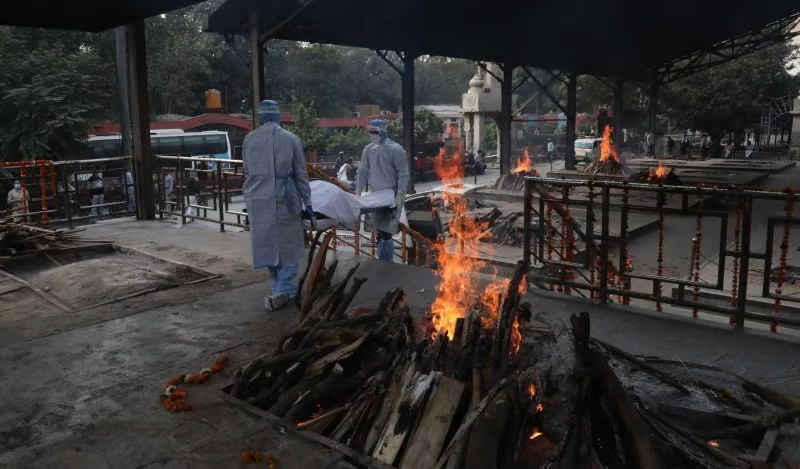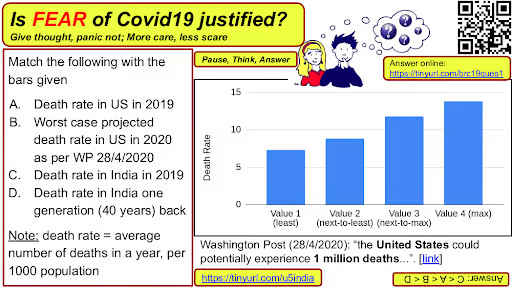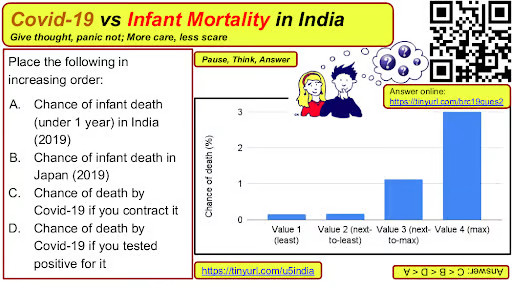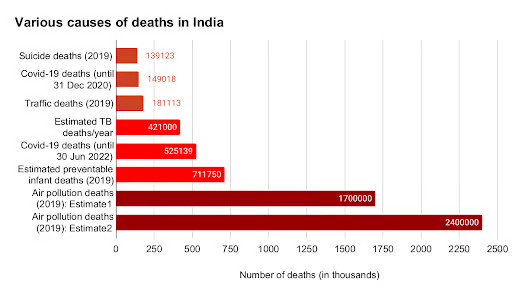
Nearly 2,000 infants die in India every day, from preventable, malnutrition and hygiene-related causes.
In light of this, the paranoia around Covid-19 causing the death of the old and comorbid, and the status of the disease as a public health issue of unforeseen scale, have been both intellectually dishonest and morally abhorrent.
In the early months of 2020 following the declaration of the Covid-19 pandemic, news pages were filled with Covid-related infection and morbidity numbers, every human activity had undergone some change, if not altogether stopped, and mortal fear has gripped much of the world. Based on my understanding of other dangers faced by common people, especially in India, the fear seemed excessive.
So I started looking at some data. As of 30 April 2020, there were only 1,154 Covid-19 deaths in India, a densely populated country with about 1.35 billion people, and nearly 30,000 normal deaths per day. It was also clear that the low death count was not due to lockdown, as social distancing is meaningless in the densely packed slums of Mumbai (the city where I live). I knew several people from such slums, but I was not hearing of any horrid tales of epidemic-scale deaths from there.
In mid-May 2020, I started making some comparisons to see if the apocalyptic fear was backed by evidence. How does the threat of Covid-19 compare with other threats the average Indian has been facing pre-Covid-19? This chapter is on such comparisons in the crowded country of India. With the aim of making the reader think, this chapter is structured as a series of questions. I encourage the reader to make a genuine attempt to answer each question, before reading the given answers and the explanation.
Death Rate Comparison
Since fear around Covid-19 is due to the deaths it can cause, let us start with the Death Rate as a metric. The Death Rate is the number of deaths per 1,000 population per year.

The figure above shows the Death Rate in the following four cases (the bars in the graph are not necessarily in this order): (A) Death rate in US in 2019 (B) Worst case projected death rate in US in 2020 as per the Washington Post’s article on 28 April 2020: “the United States could potentially experience 1 million deaths if half the population became infected and no efforts were made to limit the contagion through social distancing, a vaccine or proven therapeutics”, (C) Death rate in India in 2019, (D) Death rate in India 40 years back (1979). The exercise for the reader is to match each bar with A, B, C & D above.
The answer is shown at the bottom of the figure. C=7.3, D=13.8 [link]. A=8.8 [link], while B=11.8 can be computed from A=8.8 and US population of ~330 million.
The purpose of comparing with the death rate 40 years back is the following: most middle-aged people in 2020 had parents who lived through 1979 normally, without constant fear of death. Therefore, while one can understand some level of concern over a sudden increase in the death rate, the apocalyptic level of fear in 2020 was entirely an artefact of media-manufactured madness.
Covid-19 vs Infant Mortality in India
Let us now compare the risk of Covid-19 death with that of infant mortality. The figure below captures this comparison as a question. Keep in mind here that India has long battled the malady of high infant mortality. For perspective, the infant mortality rate in Japan is also shown in the figure, as Japan has one of the lowest infant mortality rates in the world. I encourage the reader to pause and attempt the question before proceeding.

The answer is shown at the bottom of the figure. A=3 percent [link], B=0.17 percent [link], C is the Infection Fatality Rate (IFR) estimated as 0.15 percent [link], D is Case Fatality Rate (CFR) estimated as 1.13 percent in India as of 25 Apr 2021 [link].
The infant mortality rate in India has been high (about 3 percent) for decades, and in 2020 it was nearly 20 times the estimated Covid-19 IFR (about 0.15 percent). Therefore the level of disproportionate fear of Covid-19 should have been apparent to anyone paying attention to the numbers in India.
Note furthermore, that while infant deaths result in loss of several decades of life, Covid-19 deaths have mostly been among old and comorbid, with the average age of Covid-19 death even higher than the average age of non-Covid-19 death. This further underlines the disproportionality of the fear surrounding Covid-19.
Comparing the Various Causes of Death in India
The figure below compares the number of deaths due to various causes in India. We can see that the number of suicide deaths in 2019 is comparable to the counted Covid-19 deaths in 2020. And the number of traffic accident deaths in 2019 in fact exceeds the count of Covid-19 deaths in 2020. The yearly estimated toll of Tuberculosis (TB) is even higher.

Further higher is the estimated preventable infant deaths per year. This can be estimated as follows using numbers for the birth rate, population, and death rate taken from macrotrends.net and worldometers.info. Given India’s birth rate of 17.8 per thousand and population of 1,366 million in 2019, the births per day in 2019 was about 66,600.
The infant mortality rate in 2019 in India was 3.09 while the lowest in the world was Japan’s at 0.17 percent; we take the difference as preventable infant mortality = 2.92percent. Thus the preventable infant deaths per day in 2019 = 66,600 x 2.92percent ~= 1,950 per day, or about 711,750 preventable infant deaths in 2019. Note that this is even higher than the counted overall Covid-19 toll as of 30 June 2022, of 525,139.
It is worth noting here that all three problems of suicide, tuberculosis, and child malnutrition were worsened significantly by the draconian lockdown response to Covid-19.
The disproportionality of the Covid-19 response is even more stark when the Covid-19 toll is compared with the estimated toll of air pollution. While one study estimated the deaths in 2019 due to air pollution as 1.7 million, another estimated the same as 2.4 million.
Non-effect of lockdown
A question pertinent to the numbers associated with various causes of death in the figure above is whether the lockdown in 2020 was responsible for the low Covid-19 toll. Now, India’s Civil Registration System (CRS) showed that the yearly increase in registered deaths was 475,000 in 2020, compared to 2019. Whereas, the similar increase from 2018 to 2019 was even higher, at 690,000. As per this, it is questionable whether there was a pandemic at all in 2020 in India.
Now, several people attribute the low number of Covid-19 deaths in India in 2020 to the strict lockdown. We must note that the lockdown in 2020 was unlikely to be the cause of the “low” count of Covid-19 deaths in India, for many reasons.
First, while there was a strict lockdown until May 2020, since June 2020, various services were opened and crowds were quite common. But this did not affect the viral wave curve. More scientifically, several studies have shown that there was little correlation between lockdown stringency and Covid-19 toll: for example [link1, link2].
Summary of Comparisons in India
All of the above numeric comparisons indicate that the brouhaha made about Covid-19 being a public health threat of unknown or unforeseen scale was all a gross exaggeration, and the pretense of “saving lives” hogwash. The level of dishonesty was made possible by the murder of basic math leading to a complete imbalance in Covid-19 threat perception in the minds of the public.
Bhaskaran Raman is the author of ‘Math Murder in Media Manufactured Madness,’ available on Amazon.com in Kindle format.
yea;
fear of covid; fear of putin; fear of putin using nuke , fear of china etc. what is next folks ?
All fears fabricated by western msm getting money from whom ? Tge foundation bill & melinda gates, our US malevolent ” do-gooders”
You need to impose fear to rule the sheeples. Media mercenaries get paid well for this propaganda, and politicians gain votes “for saving lifes”.